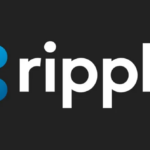Guide on XRP Staking: How to Earn XRP Rewards in 2025

XRP does not offer staking because its network, the XRP Ledger (XRPL), operates on a different protocol than proof-of-stake chains like Ethereum. The XRPL uses the Ripple Protocol Consensus Algorithm (RPCA), which does not involve staking to secure the network.
Staking has become a popular way for users to earn passive income by locking up their cryptocurrencies in a wallet to support the network’s operations. However, XRP holders do not have the option to stake their tokens due to the protocol XRPL is built on.
The RPCA works by a unique consensus process where validators on the XRP Ledger are trusted to confirm transactions without needing to compete to solve complex mathematical puzzles like in proof-of-work systems such as Bitcoin. This consensus mechanism allows for fast and efficient transactions on the XRP Ledger without the need for staking.
While staking has its benefits, such as earning rewards for securing the network, it also has its drawbacks. Staking typically requires users to lock up a certain amount of their tokens for a period of time, limiting their liquidity. Additionally, staked tokens are exposed to risks such as slashing in the event of malicious behavior by validators.
The XRP Ledger takes a different approach to achieve consensus and security without the need for staking, providing a more efficient and scalable network for users. By utilizing the RPCA, XRP transactions are confirmed quickly and securely, without the drawbacks of staking.
Despite not offering staking, XRP remains a popular choice for users looking to transact quickly and securely. The unique consensus mechanism of the XRP Ledger sets it apart from other blockchain networks, proving that there are alternative ways to achieve consensus and security without the need for staking.



